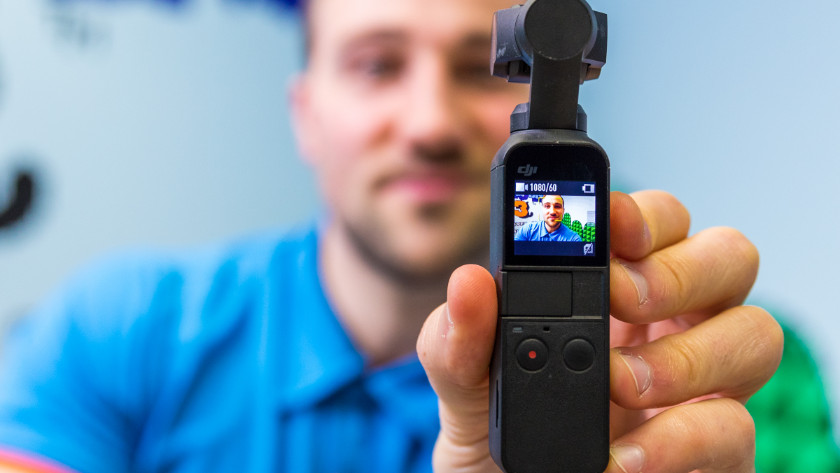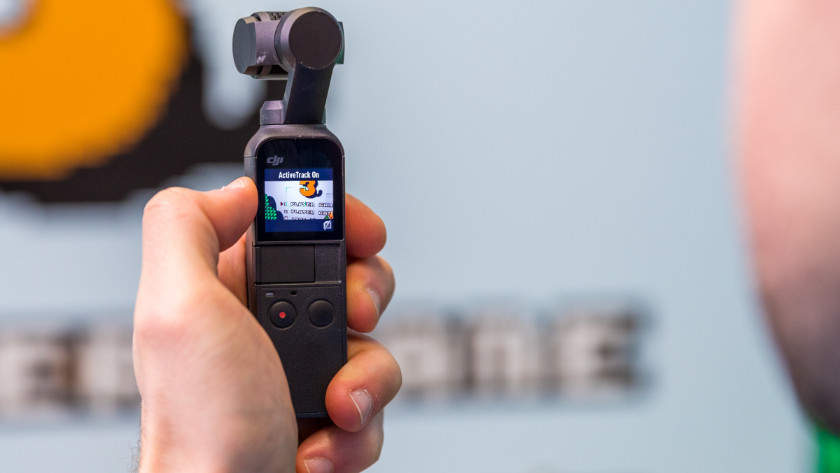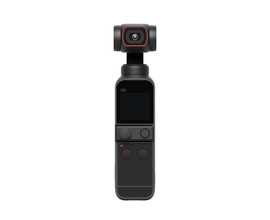
Compare the DJI Pocket 2 to the DJI Osmo Pocket
DJI Pocket 2
- Thanks to its compact size, you can take it with you anywhere.
- You can record detailed images thanks to the 64-megapixel sensor.
- The relatively large 1/1.7-inch image sensor provides more details in bright skies and dark shadows.
- Without a waterproof casing, the gimbal can't withstand rain.
- The gimbal doesn't have built-in WiFi and Bluetooth, you need the Do-It-All Handle for this.
Comparison DJI Pocket 2 and DJI Osmo Pocket
| DJI Pocket 2 | DJI Osmo Pocket | |
|---|---|---|
| Megapixels | 64 megapixels | 12 megapixels |
| Image sensor | 1/1.7-inch | 1/2.3-inch |
| Viewing angle | 93° | 80° |
| Autofocus | Hybrid AF 2.0 | Hybrid AF |
| HDR Video | Yes | No |
| Slow motion | 8x 1080p | 4x 1080p |
| 8x zoom | Yes | No |
| ActiveTrack | 3.0 | 2.0 |
Image quality

Pocket 2: 1/1.7-inch sensor with 64 megapixels
The 1/1.7-inch sensor combined with 64 megapixels allows you to record detailed images. The image sensor is larger in the Pocket 2. This ensures a greater dynamic range. This allows you to see more details, such as sharpness and colors in the bright sky and dark shadows of your images. In addition, a larger sensor captures more light, which allows you to record clearer videos with less noise in twilight or darker situations.

Osmo Pocket: 1/2.3-inch sensor with 12 megapixels
The 1/2.3-inch sensor combined with 12 megapixels in the Osmo Pocket still offers plenty of dynamic range for nice images. The difference with the new model is visible though. The smaller image sensor captures less light, so you'll see a little more noise in your recordings. Especially in twilight or dark situations, this is more visible.
Viewing angle

Pocket 2: 93-degree image angle
The Pocket 2 has a wider image angle than its predecessor. With a focal length of 20mm and a 93-degree image angle, you see and get much more in your image. Cityscapes, tall buildings, or a group selfie are no problem at all. In addition, you can create cinematic vlogs and videos with this.

Osmo Pocket: 80-degree image angle
The Osmo Pocket has a focal length of 26mm and an 80-degree image angle. This gives you a slightly narrower field of view and makes it less easy to capture vast landscapes and tall buildings. The difference with its successor is clearly visible here.
ActiveTrack autofocus

Pocket 2: ActiveTrack 3.0
The ActiveTrack function has received an upgrade compared to its predecessor. The Pocket 2 now has the ActiveTrack 3.0 function. With this function, the camera tracks the subject without losing sight of out. It's now even easier to bring action moments into focus. Thanks to the gimbal, it doesn't matter how you move the camera. The camera will keep you or the subject in focus.

Osmo Pocket: ActiveTrack 2.0
The Osmo Pocket now has the outdated version of the ActiveTrack feature. This doesn't mean that this feature doesn't work well. The Osmo Pocket does almost everything that the Pocket 2 can also do in terms of autofocus. The difference is in the effectiveness of the autofocus. The Osmo Pocket sometimes loses focus of the object, or doesn't capture it sharp enough. The difference isn't large, but it's noticeable.
Conclusion
If you look at the 2 models side by side, you barely see any difference in appearance. This is different under the hood though. The Pocket 2 has a larger sensor, more megapixels, a wider image angle, and improved ActiveTrack autofocus. This makes the Pocket 2 the better model. The Osmo Pocket with gimbal is still a good action camera. Do you want the best image quality and capture as much as possible in your pictures during your winter sports vacation or vlogs? The Pocket 2 is clearly the better choice for you.



